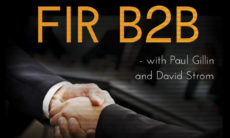I work with lots of companies to launch products. I am working with one now-and the launch hasn’t gone very well. Sales are scary low–they round to zero.
This is a disappointing turn of events for sure, but I wasn’t prepared for the idea that was floated next: let’s cut the price of the product 40%.
See, the problem here is that we have no evidence that price is the problem. In fact, because sales are so low, we actually have evidence that it isn’t price at all–when the problem is price, you typically sell some but just not enough. When you sell none, you usually have one or more of these problems:
- Your product doesn’t solve a problem that your network will pay for.
- You don’t have a big enough network.
- You haven’t reached your network.
If any of these are the real problem, lowering the price will have no positive effect, because price isn’t the problem. All that lowering the price will do is to slash the profit of what few sales you do get, and–worse–communicate that your product isn’t that good, even if it is.
In this particular case, we have some evidence that the product is, in fact, good. We have some evidence that it is a market need. But we don’t know whether the network is large enough or whether it has been effectively reached. So, lowering the price just communicates a lack of confidence in the value.
Think about it. If I let you test drive a luxury car and it handled beautifully, looked fantastic, and had every feature you expected, but when you asked the price I told you it was $10,000; would you be excited, or suspicious? I believe many of you would start to question your own judgement of how good the car is just because the price is wrong.
Price communicates value. Lowering the price communicates low value.
I am working as a senior strategist at a few companies. One of them is Revealed Context, who has a high-quality API that identifies sentiment and other qualities of social media conversations at a level of accuracy unseen anywhere else. It costs more than some other solutions–it also costs less then some, but it isn’t the cheapest. When a client asks me why it is more expensive than other solutions, I ask them how much less they would like to pay to get the wrong answer. That often gets the conversation back where it belongs–on the value, to them, of an accurate solution.
Another company that I work with is SoloSegment, who offers a solution that improves a company’s website search results. It’s a combination governance model, scorecard, and improvement process that is unique–and effective. I have had a few companies ask me why it is priced as it is, and I say, “well, if the price is too high, maybe you should get the other one.” And they ask, “what other one?” I reply, “exactly.” You see, that kind of conversation gets us back on track–talking about the value of this unique solution to their company’s situation, rather than haggling about the price in abstract.
Now understand, I am not saying that you should raise the price artificially just to trick people into thinking something is valuable. That doesn’t work in the long run, because when people buy it, the product has to speak for itself. None of the examples I have given here are artificially priced higher–it is a simple fact that providing higher quality does cost more, which your customers intuitively understand and accept.
When you have something valuable, you must price it to indicate its value. Otherwise, there is a disconnect between how valuable you say it is and that rock-bottom price. If you simply discount your price to try to solve all sales problems, you actually create a bigger problem: you are showing lack of confidence in your own value in front of your customers. If you don’t value what you are selling, why should they?








